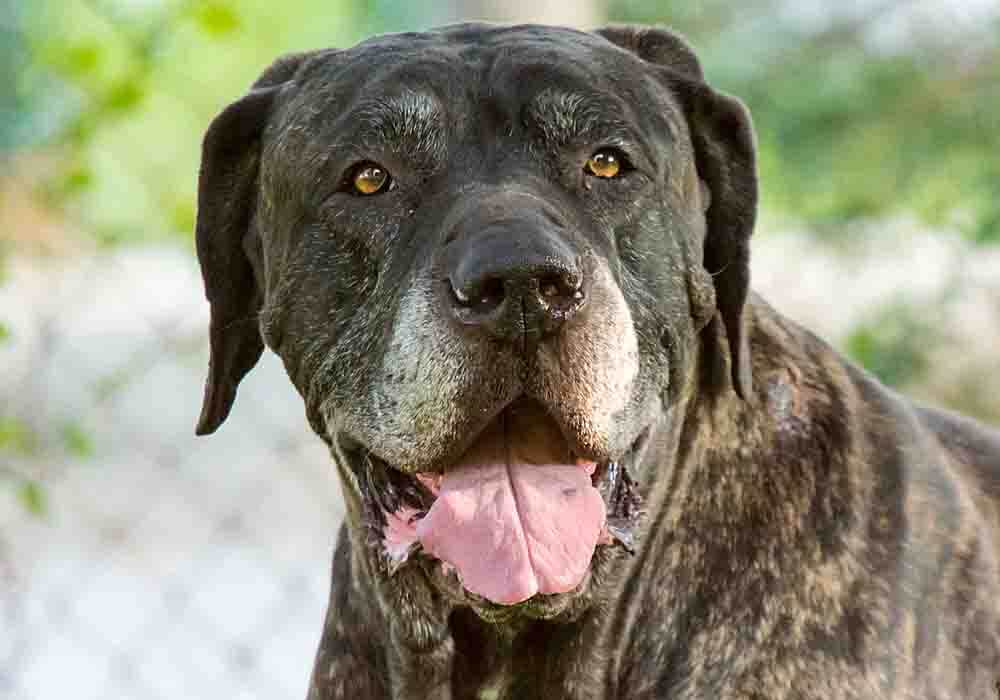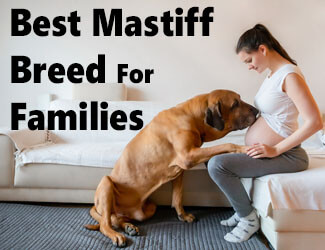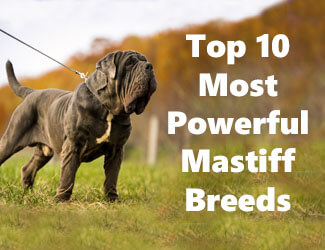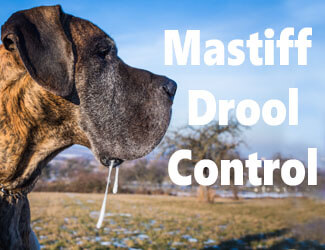19 Mastiff Breed Types
A-Z List with Traits
& Pictures
by Ken Alden
Though the term “Mastiff” is often used to
describe what we now know as the English Mastiff, there are somewhere around 19
different Mastiff breed types in existence today.
The 19 current Mastiff breed types as of this year...
- Abruzzese Mastiff (Mastino Abruzzese)
- American Mastiff (Bandogge)
- Argentinian Mastiff (Dogo Argentino)
- Brazillian Mastiff (Fila Brasileiro)
- Bullmastiff
- Canary Mastiff (Perro de Presa Canario)
- English Mastiff
- French Mastiff (Dogue de Bordeaux)
- German Mastiff (Great Dane)
- Italian Mastiff (Cane Corso)
- Japanese Mastiff (Tosa Inu)
- Korean Mastiff (Dosa Gae)
- Neapolitan Mastiff
- Pakistani Mastiff (Bully Kutta)
- Pyrenean Mastiff
- South African Mastiff (Boerboel)
- Spanish Mastiff (Mastin Espanol)
- Tibetan Mastiff
- Turkish Mastiff (Aksaray Malaklisi)
Though all Mastiffs have similar features, no two Mastiff breeds are exactly the same. Keep reading to find out what makes each of these breeds so unique and what their temperaments are really like....Here's our A-Z list.
Pro-tip: Ever try lifting a Mastiff? Their weight can hurt not only your back but their joints when they hop down from cars, sofas or even your bed. To protect your back and theirs check out the best Mastiff ramps on Amazon.com now.
19 Types Of Mastiff Dog Breeds A-Z
Abruzzese Mastiff (Mastino Abruzzese)
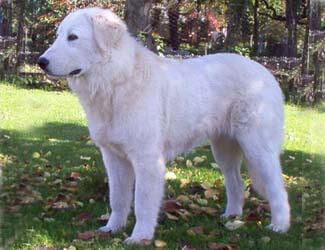
The Abruzzese Mastiff, also known as the Martino Abruzzese, originates from Italy and has been used as a guardian of livestock for centuries in several countries throughout the world. Though most often used as a guard dog, this dog excels when working with other Mastiffs to protect a flock. Given its impressive size, this dog is very powerful and capable of successfully fighting large animals like bears.
The Abruzzese Mastiff is not currently recognized by the American Kennel Club.
Abruzzese Mastiff Traits & Characteristics
The Abruzzese Mastiff is a tough breed that truly understands its
massive physical size. This dog is known for being loyal and protective of its
own family, though the breed also appears to do quite well with new people once
acquainted properly. This dog is known for being stubborn and difficult to
train, yet very gentle with children and younger crowds.
Average Size & Weight
Weight: 88 to 220 pounds (40 to 100 kilograms)
Height: 26.7 to 29.5 inches (68
to 75 centimeters)
American Bandogge Mastiff
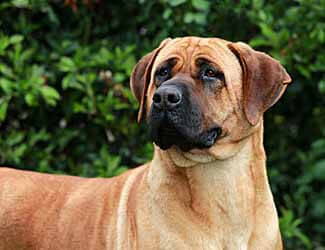
The American Bandogge Mastiff originated in the state of Ohio (America) in the 1980s after the English Mastiff was mixed with the Anatolian Mastiff. The breed was developed in an effort to reduce some of the health and behavioral issues linked to inbreeding among Mastiffs. This dog has a very similar appearance to its English Mastiff ancestors, but is much smaller and doesn’t drool quite as much.
The American Mastiff is not currently recognized by the American Kennel Club.
American Mastiff Traits & Characteristics
Though the American Mastiff is considered a gentle giant among the Mastiff breed types and does well with children, the breed also tends to be a little stubborn and resistant to training. It’s very common for this dog to push the boundaries of the home, yet show a mass amount of affection toward its owners too. The breed is known for being loyal, protective, and, most of all, patient with children.
Average Size & Weight
Weight: 120 to 200 pounds (54 to 91 kilograms)
Height: 28 to 36 inches (71 to
91 centimeters)

Over thousands of years mastiffs played more of a utilitarian role in society rather than that of beloved pet. But what was that role? Our fascinating article What Were Mastiffs Bred For answers this.
Argentinian Mastiff (Dogo Argentino)
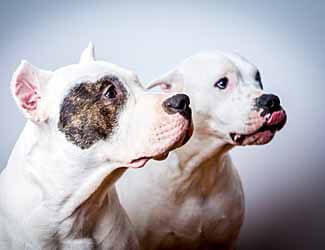
The Argentinian Mastiff, also known also as the Dogo Argentino, originates from Argentina after being developed by Doctor Antonio Nores Martinez in the 1920s. He was determined to develop a highly-capable guarding and hunting breed similar to the native fighting Cordoba Dog. Combined with several large breed dogs, such as the Great Dane and the Spanish Mastiff, this dog is now a successful working mastiff breed types
The Argentinian Mastiff is a member of the American Kennel Club’s working group.
Argentinian Mastiff Traits & Characteristics
The Argentinian Mastiff is a highly active dog that appreciates a ton of exercise and having a confident and capable owner. This former hunting dog is known for having a high prey drive, meaning it might not be a great fit for homes with cats and small dogs. This dog has proven to be a successful watchdog and is highly territorial and protective of his own family.
Average Size & Weight
Weight: 77 to 99 pounds (35 to 45 kilograms)
Height: 24 to 27 inches (61 to
69 centimeters)
Brazillian Mastiff (Fila Brasileiro)
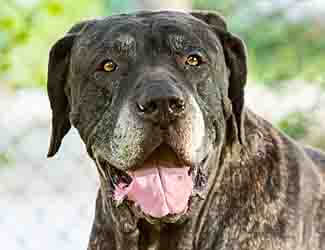
The Brazilian Mastiff, also known as the Fila Brasileiro, originated in Brazil and was quite a successful working mastiff breed type upon its introduction. This dog was once used to chase down large predators while protecting its cattle, learning to pin down any threats and await instruction from its farmer. The highly loyal and protective nature of this dog makes the breed a successful guard dog, even today.
The Brazilian Mastiff is not currently recognized by the American Kennel Club.
Brazilian Mastiff Traits & Characteristics
Though the breed is no longer used as a cattle guardian in most instances, the Brazilian Mastiff continues to demonstrate protective guard dog instincts. This Mastiff doesn’t get along well with strangers and takes a decent amount of time to fully socialize. This dog is recognized for its usually calm demeanor that can swiftly shift to protective in an instant.
Average Size & Weight
Weight: 130 to 180 pounds (59 to 82 kilograms)
Height: 24 to 30 inches (61 to
76 centimeters)
The Bullmastiff
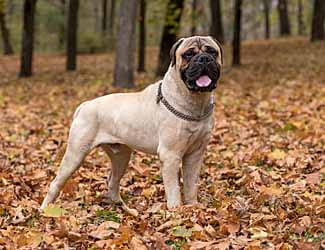
The Bullmastiff is a combination of the Bulldog and the Mastiff, a mixed breed dog bred specifically for the ideal features of each. This mixed breed resulted in a dog that was both powerful and large and thrived as an estate guardian in the 1800s. This dog was known for excelling at keeping poachers away, known to attack relentlessly until told to stop. Today, this dog maintains its protective instincts at home.
The Bullmastiff is a member of the American Kennel Club’s working group.
Bullmastiff Traits & Characteristics
Despite its size and incredible power, the Bullmastiff is actually a very friendly and loyal family companion. This dog enjoys spending time with its family and showing affection by just being close to its owners. Though the breed picks up on new skills quickly with firm training sessions, this dog isn’t great with other dogs and is known to compete for dominance.
Average Size & Weight
Weight: 100 to 130 pounds (45 to 59 kilograms)
Height: 24 to 27 inches (61 to
69 centimeters)
Pro-tip: Mastiff anxiety, aggression, destructive chewing, jumping up, fearfulness, and other behaviors can be controlled with the right training program.
Here’s a great course that
addresses these issues along with many other dog training basics: Check it out now!
Canary Mastiff (Perro de Presa Canario)
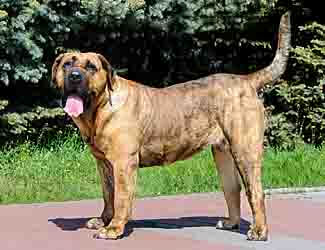
The Canary Mastiff, also known as the Perro de Presa Canario, was first recognized in the 15th or 16th centuries when the Spanish began bringing their own Mastiffs to the Canary Islands. This mastiff breed type obtained the role of a loyal livestock guardian, keeping predators at bay and their flocks completely safe. Eventually, this muscular and massive dog would be used as a fighting dog.
The Canary Mastiff is a member of the American Kennel Club’s Foundation Stock Service.
Canary Mastiff Traits & Characteristics
The Canary Mastiff is known as a rather active dog that desperately craves all types of mental stimulation. The breed tends to be protective in nature and demonstrates a high-prey drive, making this breed unfit for homes with small dogs and cats. This dog is known for building deep connections with its family and desiring immense amounts of attention.
Average Size & Weight
Weight: 83 to 130 pounds (38 to 59 kilograms)
Height: 22 to 26 inches (56 to
66 centimeters)
English Mastiff
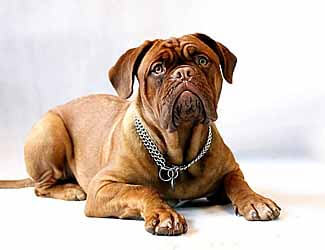
The English Mastiff, sometimes known as just the Mastiff, is a breed that was first discovered thousands of years ago in ancient civilizations. Once considered a war dog, this dog eventually transitioned into a fighting breed in Roman arenas. This Mastiff variation also proved successful at hunting large game like bulls and lions while in England and guarding estates and properties against all types of threats and dangers.
The English Mastiff is a member of the American Kennel Club’s working group.
English Mastiff Traits & Characteristics
The loyal and affectionate nature of the English Mastiff makes this mastiff breed type the ideal family dog and companion. This dog would be accurately described as a “gentle giant” and enjoys spending quality time with its family. The low energy levels of this dog makes this breed ideal for families that spend a lot of time in the house relaxing.
Average Size & Weight
Weight: 120 to 230 pounds (54 to 104 kilograms)
Height: 27.5 inches and up (70
centimeters and up)
French Mastiff (Dogue de Bordeaux)
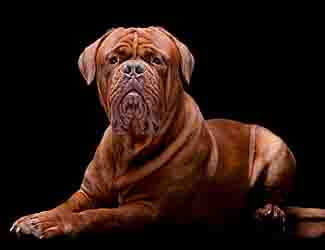
The French Mastiff, also known as the Dogue de Bordeaux, is considered an ancient French dog breed that can be traced back to the 14th century. Back in France, breeders made it a point to keep the bloodline of this breed as pure as possible to promote a consistent physical appearance.This dog was once used as a guard dog for large properties, a large hunting dog, and even a fighting dog.
The French Mastiff is a member of the American Kennel Club’s working group.
French Mastiff Traits & Characteristics
Given the sheer size and muscular strength of the French Mastiff,
this breed requires a firm owner capable of consistent training regimens. This
dog is a very low energy dog that enjoys relaxing and being affectionate with
its owners at home. Despite the protective nature of this dog it is also known
as being gentle with children.
Learn even more about this fascinating breed from this article.
Average Size & Weight
Weight: 99 pounds and up (45 kilograms and up)
Height: 23 to 26 inches (58 to
66 centimeters)
German Mastiff (Great Dane)
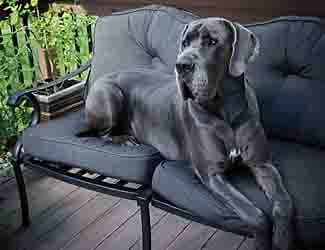
The German Mastiff, also known as the Great Dane, is presumed to come from the English Mastiff and the Irish Wolfhound. The breed was known for being kept by the royals of Germany in the 1800s, asserting itself as a successful guardian of large estates and properties. This breed was also an agile hunting dog, capable of pinning down large game like boar and bear until its owner would finish the job.
The German Mastiff is a member of the American Kennel Club’s working group.
German Mastiff Traits & Characteristics
The German Mastiff is a loyal breed that also tends to be noticeably wary of strangers and new people. The breed thrives when in the presence of children and is extremely protective of the home and its family. Despite its playful nature, this dog does tend to be difficult to train and requires a large amount of daily exercise and play.
Average Size & Weight
Weight: 110 to 175 pounds (50 to 79 kilograms)
Height: 28 to 32 inches (71 to
81 centimeters)

Not only are Danes a great family dog, they also have a fascinating history as to why they were bred in the first place.
Italian Mastiff (Cane Corso)
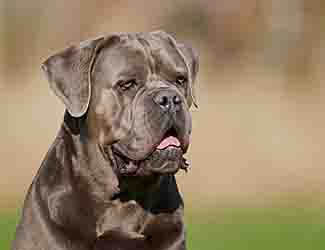
The Italian Mastiff, also known as the Cane Corso, is a breed that originated from southern Italy and is believed to be related to Roman war dogs. Once the size and power of this mastiff breed type was recognized, the breed was eventually used as a guard dog, capable of keeping large boar and other predators at bay. Though a successful guard dog and watchdog, this breed almost completely died out in the 1900s.
The Italian Mastiff is a member of the American Kennel Club’s working group.
Italian Mastiff Traits & Characteristics
The Cane Corso is known for being a calm and gentle breed
that’s receptive to training and learning new skills. The breed requires a lot
of physical activity and enjoys exercise and going for long walks. This dog
struggles with new people and might become aggressive, asserting itself as a
dominant and protective breed.
If you're considering adding one to your family we'd advise reading this article of ours.
Average Size & Weight
Weight: 88 to 110 pounds (40 to 50 kilograms)
Height: 23.5 to 27.5 inches (60
to 70 centimeters)
Japanese Mastiff (Tosa Inu)
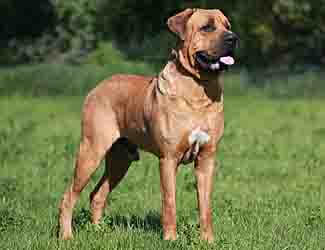
The Japanese Mastiff, also known as the Tosa Dog, was once a popular Japanese fighting dog that was first noticed in the 19th century. It’s believed that this breed comes from the Shikoku-Inu, which is another native Japanese dog that’s similar to the Shiba-Inu. Given this breed’s history of fighting and aggression due to poor training, the breed is illegal in many countries, though thriving as a watchdog in others.
The Japanese Mastiff is a member of the American Kennel Club’s Foundation Stock Service.
Japanese Mastiff Traits & Characteristics
Without consistent and firm training, the Japanese Mastiff is known for being potentially aggressive. However, this Mastiff breed type does get along well with its own family, asserting itself as a protective and loyal watchdog. This dog enjoys being dominant, but also enjoys pleasing its owner through obedience.
Average Size & Weight
Weight: 79 to 200 pounds (36 to 91 kilograms)
Height: 21.5 to 23.5 inches (55
to 60 centimeters)
Korean Mastiff (Dosa Gae)
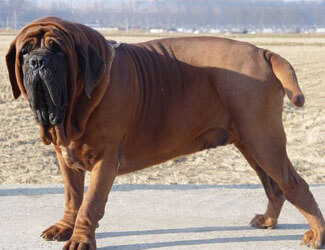
The Korean Mastiff, also known as the Dosa Gae, is a relatively rare breed that’s only really popular in Korea as of right now. Not much is known about the history of this breed, but the appearance of the breed is quite striking and memorable. This dog is known for being absolutely massive and covered in wrinkles and extra skin, setting it apart from practically any other breed in the world.
The Korean Mastiff is not currently recognized by the American Kennel Club.
Korean Mastiff Traits & Characteristics
The Korean Mastiff is known as being a gentle and affectionate dog, sometimes being described as a loving lap dog and the perfect family dog. The breed is rather social and prefers to be surrounded by its family, willing to do whatever it takes to defend its property and loved ones when a threat appears.
Average Size & Weight
Weight: 145 to 185 pounds (66 to 84 kilograms)
Height: 23.5 to 30 inches (60 to
76 centimeters)
Pro-tip: Mastiff's (and their owners) love dog crates…and for good reasons. Crates keep dogs from mischief while you're away, are perfect for house training, for traveling by car, and provide the dog a place to de-stress. Check out the best Mastiff crates on Amazon.com now.
Neapolitan Mastiff

The Neapolitan Mastiff comes from southern Italy and was bred to maintain a specific appearance, preferably one that would scare intruders or predators away regardless of the temperament of the dog. The breed was once successful as a property guardian and is actually pretty quick and agile despite its size and muscular build. When this breed started fading in popularity in the 1940s, Piere Scanziani made an effort to bring them back.
The Neapolitan Mastiff is a member of the American Kennel Club’s working group.
Neapolitan Mastiff Traits & Characteristics
The Neapolitan Mastiff is still considered a loyal guardian today, though it defends family homes rather than large estates. Though quite territorial and protective of its family (including children), this mastiff breed type is known for being quite lazy and sleepy. This breed requires a low-energy, relaxed atmosphere without much physical activity. If considering bringing one home we advise you to read this article.
Average Size & Weight
Weight: 110 to 150 pounds (50 to 68 kilograms)
Height: 24 to 31 inches (61 to
79 centimeters)
Pakistani Mastiff (Bully Kutta)
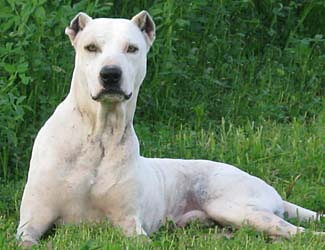
The Pakistani Mastiff, also known as the Bully Kutta and sometimes called the Indian Mastiff, appears to have originated on the Indian continent around the 16th century. The breed was known for excelling as working dogs, proving successful in both the guarding and hunting arenas. This dog was also used as a fighting dog for a number of years, though this practice eventually faded away. The breed is most popular in India today.
The Pakistani Mastiff is not currently recognized by the American Kennel Club.
Pakistani Mastiff Traits & Characteristics
The Pakistani Mastiff is a difficult and stubborn breed that requires a lot of physical activity. When this breed is bored, untrained, or under-stimulated, it’s much more likely to demonstrate behavioral issues and become aggressive. This dog doesn’t do too well with other dogs and might even be a safety issue with children in its own family.
Average Size & Weight
Weight: 150 to 200 pounds (68 to 91 kilograms)
Height: 32 to 40 inches (81 to
102 centimeters)
Pyrenean Mastiff
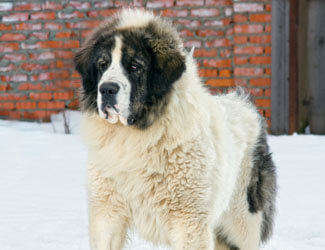
The Pyrenean Mastiff is a large and protective herding dog that originated in the Aragonese Pyrenees area of Spain several centuries ago. The breed was utilized as a herding dog with large flocks of sheep, keeping sheep safe from predators like wolves while traveling across the country in large herds. The breed almost officially died out after financial difficulties caused by the Spanish Civil War, but the breed was ultimately recovered.
The Pyrenean Mastiff is a member of the American Kennel Club’s Foundation Stock Service.
Pyrenean Mastiff Traits & Characteristics
The Pyrenean Mastiff is known for being quite calm and gentle, specifically with dogs and children that it’s become acquainted with. However, this breed desperately requires an experienced owner that understands dominance. When trained well and rewarded positively, the breed is usually a well-behaved, obedient breed.
Average Size & Weight
Weight: 120 to 140 pounds (54 to 64 kilograms)
Height: 25 to 31 inches (64 to
79 centimeters)
South African Mastiff (Boerboel)
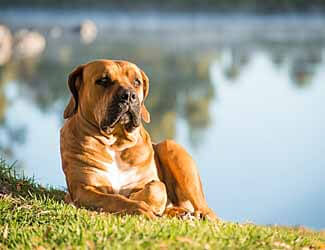
The South African Mastiff, also known as the Boerboel, originates from South Africa and is considered one of the most powerful dog breeds in the world when it comes to its bite force. The origin of this mastiff breed type is believed to be a combination of native African dogs and breeds that were brought over by European settlers. This breed excelled when it came to protecting property, specifically being applauded for its ability to engage with large predators like lions.
The South African Mastiff is a member of the American Kennel Club’s working group.
South African Mastiff Traits & Characteristics
The South African Mastiff is known for being a highly active dog that needs constant mental and physical stimulation. Without training and with boredom, the breed is known for getting destructive and perhaps aggressive. When trained properly, this dog can be a great family watchdog. Here's even more interesting breed information.
Average Size & Weight
Weight: 110 to 200 pounds (50 to 91 kilograms)
Height: 23 to 28 inches (58 to
71 centimeters)
Spanish Mastiff (Mastin Espanol)
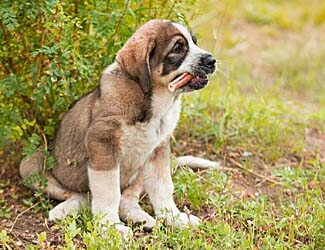
The Spanish Mastiff, also known as the Mastin Espanol, is a breed that comes from Spain and has proven itself to be a successful herding and guard dog. The breed is noted for its ability to protect large groups of sheep from relentless predators like wolves, especially when it came to longer travels across the Spanish countryside.
The Spanish Mastiff is a member of the American Kennel Club’s Foundation Stock Service.
Spanish Mastiff Traits & Characteristics
Despite being affectionate with its own family, the Spanish Mastiff also tends to be quite aloof, instead preferring to spend its time keeping an eye on the home and protecting its family from strangers. This breed is considered an active breed that craves sufficient exercise to tone down its normally high energy levels. When not properly trained, the breed might be aggressive and develop a barking habit.
Average Size & Weight
Weight: 110 to 220 pounds (50 to 91 kilograms)
Height: 28 to 35 inches (71 to
89 centimeters)
Tibetan Mastiff
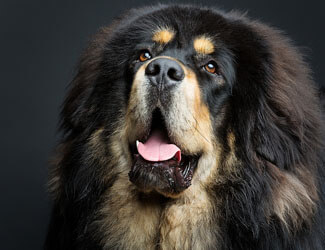
The Tibetan Mastiff was the ideal guard dog breed in Himalayan villages in the Tibetan Plateau. The breed was known for being tied up during the day and then being released at night where it would officially begin its duties protecting the village from large predators like wolves and tigers. This dog was also used as a guardian of flock and livestock, employing measures like scent marking to keep predators at a distance.
The Tibetan Mastiff is a member of the American Kennel Club’s working group.
Tibetan Mastiff Traits & Characteristics
The Tibetan Mastiff is an active dog that needs a massive amount of space or a fenced-in yard to remain happy. The breed tends to be extremely protective of its owners, but it’s also known for having an independent and free-thinking personality. Given these traits, this breed is a little stubborn when it comes to training and doesn’t fare too well with children or strangers.
Average Size & Weight
Weight: 75 to 160 pounds (34 to 73 kilograms)
Height: 24 to 30 inches (61 to
76 centimeters)
Turkish Mastiff (Aksaray Malaklisi)
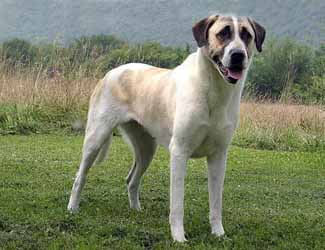
The Turkish Mastiff, also known as the Aksaray Malaklisi or Anatolian Mastiff, comes from the Anatolian region of Turkey. Given the physical appearance of the breed, it’s believed that this breed comes from the English Mastiff and the native Kangal Dog, both highly-regarded guardian dog breeds. This mastiff breed type is most often used as a livestock guardian in Turkey but isn’t so popular in the rest of the world just yet.
The Turkish Mastiff is not currently recognized by the American Kennel Club.
Turkish Mastiff Traits & Characteristics
The Turkish Mastiff is known as a strong and active dog, craving physical activity and requiring mental stimulation to stay active and entertained. This dog remains protective, even today, making this dog a loyal watchdog for farms and family homes. When it comes to strangers, the breed tends to be aloof and wary of new people, preferring to spend time with its own family.
Average Size & Weight
Weight: 88 to 140 pounds (40 to 64 kilograms)
Height: 28 to 32 inches (71 to
81 centimeters)
Mastiff Breed Types...Some Final Thoughts
For the most part, Mastiffs make loyal companions and some make
for fierce guard dogs. At the same time, not all breeds of Mastiffs would make a
good fit in your home. Before you settle on just getting any type of
Mastiff, do your research and find out which one is most suitable for your
environment.
Here’s what you need to keep in mind.
- Not all Mastiffs get along well with children, cats, dogs, or strangers
- Some Mastiffs are more difficult to train and are known to be overly protective
- The specific size and genetics of a Mastiff will determine possible health issues
-
Most tend to shed and drool quite a bit
Back To The TOP Of This Mastiff Breed Types Page

About the Author...
Ken Alden, a dedicated Mastiff owner for over eight years, is acclaimed for his expertise in care, grooming, and training. Read more About Me and my dog Shadow.
- Mastiff Guide Home ›
- Mastiff Breed Info ›
- Mastiff Breed Types
